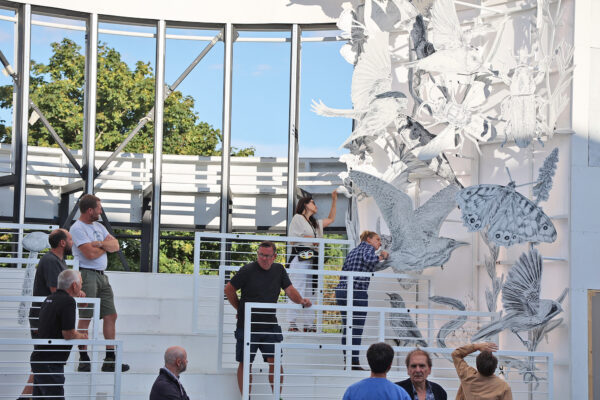
Project Management in the creative industries is both art and discipline; translating vision into reality through co-ordination, communication and problem-solving.
The phrase Project Management is probably second only to Production as the most confusing term in our industry. The phrase spans every sector, but within the creative industries it carries a very specific meaning. This article outlines what it means to us and we hope it serves as a useful reference for anyone considering bringing a project our way.
Here at Stage One, a Project Manager is appointed once a project has been confirmed. Until then, our team of Account Managers and Directors manages the opportunity as it moves through our pipeline. Depending on the scale of the project, one or more Project Managers will be assigned based on the project type and the disciplines required to get it over the finish line.

In the broadest terms, we have Technical Project Managers, Creative Project Managers, Engineering Project Managers and Construction Project Managers. Often a project will have blurred edges and require input from different skill sets, and we’re well able to accommodate this. Having defined specialisms serves us well and avoids defaulting to generalists, which is an important part of our value proposition.
Arguably, the overarching skill of all our Project Managers is that of translator; translating client requirements into a format that can be effectively communicated to our internal teams. These requirements might be creative, functional, technical or programmatic. We don’t expect our clients to tell us how to deliver a project, but we do need a clear understanding of what is expected. This is where effective translation becomes essential. And, like all good translation, it works both ways; ensuring our clients also understand where we are in the process and what comes next.

Efficient coordination of departments, activities, budgets and schedules is another critical skill. Managing a thousand moving parts, hundreds of hands, and tens of suppliers means that, regardless of project type, there is always a significant body of coordination to be done. Not everything runs to schedule, and with multiple projects running concurrently, competition for resources is inevitable, making this one of the Project Management team’s most challenging responsibilities.
Problem resolution is the third key pillar of the Project Manager’s craft. Even the most straightforward projects will have bumps along the way. Reactive problem solving – often quickly, remotely, and with limited resources – is standard procedure for our PMs. In many cases, it’s the path to the solution, rather than the solution itself, that is most impressive.
Significantly, the Project Manager’s role is unique in that it remains with the project from the moment of award through to completion and beyond. It’s a team effort of course, and PMs are supported by departments across the business, but they are often the only individual who sees a project from design through to delivery and sometimes long after. It can be a long old haul.

Beyond these core skills are a series of behaviours that define the best Project Managers: patience, tenacity, strong leadership, a cool head, and relentless good humour. It can be the best of jobs and the worst of jobs, often on the same day.
Stage One is fortunate to have at least sixteen permanent and freelance Project Managers, each a remarkable individual bringing rigour and control to everything we deliver. In essence, they are the steady hands guiding each project to completion, balancing creativity with accountability.

Beyond the boundaries of our own practice, however, the evolution of project management in the creative industries signals something more significant: an acknowledgment that great ideas are only as powerful as their execution. As the work we do becomes more complex, collaborative and technically demanding, the Project Manager’s role as translator, coordinator and problem-solver has become central to the creative process itself.
Project management is no longer just a discipline of delivery, but one of design — shaping how ideas move from imagination to reality. And that, ultimately, is where the true artistry of our industry lies.





